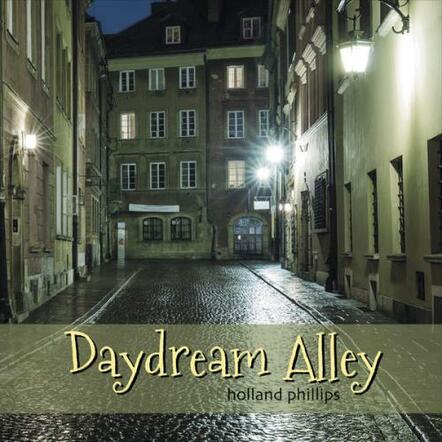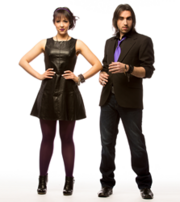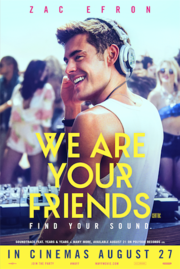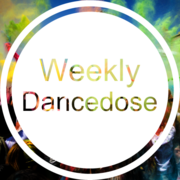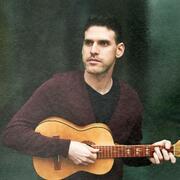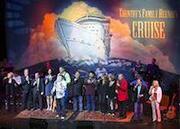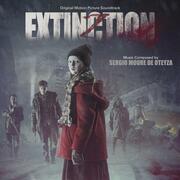New York, NY (Top40 Charts) On multi-instrumentalist Holland Phillips' fourth album, Daydream Alley, he blends the sounds of piano, synthesizer, violin, a string section, chimes, bass, drums, oboe, bassoon, sax, percussion, electric piano, French horns, trombones, B3 organ, harpsichord, chimes, flute, percussion and more. "However," he states, "in the end I think the most important two things are the harmonics and the spaces between the notes, and especially the harmonic-space relationship."
The instrumental music that Phillips creates, which appeals to new age music lovers, also shows subtle neo-classical and prog-rock influences because he spent many years studying classical music and playing in classic and progressive rock bands. Interestingly enough, even though Phillips creates all of the music on the new album using a wide array of keyboards and synthesizers from the past 40 years, he realistically captures the sounds of many different band and orchestral instruments. One way he does this is by learning to play the real instruments first so he knows their range, limitations and capabilities.
"I started learning lots of instruments as a child because my mother was a music teacher and we always had instruments laying around," Phillips explains. "I really got into it in college because, as a music composition major, I had a professor who requested I play all the instruments in a symphony orchestra before writing scores for them. So I worked my way through more than a hundred instruments. I said I learned to play them, but I didn't say I learned to play them all well. But it gives me an advantage over many composers because I can recreate each specific sound having studied how an instrument plays, how it phrases, how much breath is needed, just what possibilities it offers."
"I collect synthesizers and keyboards, both old and new, including the original mini-Moogs. I have keyboards from the Seventies and Eighties that give a completely different sound than more modern ones. I pick whichever one is right for a particular song. I sometimes buy backup copies of old ones so that if it breaks I can plug in the other one and keep on going. When I used to tour with rock bands, it took a lot of groaning roadies to carry and assemble all my gear."
One aspect of playing keyboards that has always appealed to Phillips is sometimes playing his synthesizers so that they sound like synthesizers. "I love the versatility of the synths and it is great that they can sound like any other instrument in the world," he says. "But they have an added dimension because they also have a very distinctive sound all their own that sounds like nothing else ever created, and I love incorporating strong synth parts."
Phillips grew up in Connecticut playing whatever instruments his mother brought home --trombone, tuba, flute, percussion. He started on piano when he was just a few years old, and picked up guitar when he was eight. He also thought it was fun to simply pick up an instrument, play a few notes and then start writing a song using it. He remembers being influenced by The
Beatles when he was young, but moving on to rock bands such as Pink Floyd, Styx, Rush, Kansas and many more when he was in high school.
Phillips spent four years at Marietta College in Ohio earning his BA Degree in
Music Composition while continuing to take piano and classical guitar lessons. "I immersed myself in classical music, especially Beethoven, Bach, Chopin and Tchaikovsky," he remembers. "I had to analyze everything from the classics to pop music, and then write symphonies, etudes and sonatas. For a couple of my finals I had a full orchestra play one of my pieces and a choir sing one of my compositions. Those were thrills of a lifetime."
After graduation Phillips spent some time in a folk duo in New York City where he attended guitar workshops taught by
Paul Simon and a variety of guests including Adrian Belew (King Crimson, Frank Zappa,
David Bowie). Phillips went on to join a Southern Rock band, then a classic rock group, then an ensemble that specialized in show tunes. "I always tried to immerse myself in whatever situation I was in, learn that style thoroughly and become proficient playing that type of music." After many long tours of the United States and Canada, he decided to settle down in Ohio and concentrate on studio work and became an active and in-demand session player. "I liked a variety of types of music whether it was Yes,
Journey or Beck. I was especially influenced by Rick Wakeman and his series of solo albums, and by Alan Parsons as a producer and arranger. I found Wakeman,
Vangelis and Wendy
Carlos interesting because they were doing electronic instrumental music before almost anyone else. They led me to start recording instrumental albums that seem to fit in the new age market, although I have a tendency to experiment and color outside the lines." For his first two albums, Phillips brought in saxophonist Paul Christianson (The Michael Stanley Band) on some tracks. "Someone said I shouldn't put sax on a new age recording, but I didn't listen then either. And I love the feel it gave those albums."
Daydream Alley kicks off with a modern classical piece, "Etude in D Minor," which utilizes violin as the lead instrument, but has a three-part counterpoint section between the violin, a group of French horns and the string section. The neo-classical feeling continues with "Two Pianos" which does indeed feature Phillips playing both piano parts bolstered by strings. "Serendipity" is a catchy pop-new-age tune with hints of prog and including strong synth parts along with piano, oboe, flute, chimes and strings.
"Jazz Nite," as the title implies, is the jazziest piece on the recording and resembles a jazz quartet with a keyboardist on strong upfront piano plus synthesizer, and backed by bass, drums and sax. The tune "Daydream Alley" has a powerful synth that comes and goes plus bassoon, French horns, piano and drums. Phillips had fun creating the forceful "Changing Times" because every phrase is in a different time signature. Regarding the piece "Touched By Fire," Phillips says, "Fire was one of the most valuable tools discovered by humankind who also had to learn to be careful with it because of the potential destruction." The tune features a variety of keyboards including organ plus a trombone horn section.
For the composition "Friends," which uses a bassoon sound for the lovely melody, Phillips says he envisioned "people just enjoying life." The upbeat "Last Night Out" has an alto saxophone soloing all the way through which gives the tune a bit of a jazzy feel as does the supporting electric piano. "Reflexions" has an 18th Century classical feel because of the harpsichord keyboard sound with strong support from flute, French horns and strings. With "Sombrero Key" Phillips was inspired by the time he has spent in Florida, Key West and at some of the remote keys along the coast ("There is just a different feeling you get down there.") "I got the name for 'Colors' because the music has a broad palette, a lot of different colors in it. I was definitely influenced by Alan Parsons when I mixed this track."
Phillips titled the album Daydream Alley because "life is full of daydreams and the possibilities of the roads taken and not taken. We travel down the main street most of the time, but sometimes we come to an alley, an off-shoot, a side-road, and we look down it and wonder what would happen if we went that way instead. Most of us have those crossroads in our lives where we went one way rather than another and it changed our life dramatically -- picking a different field to study, moving to a new place, changing jobs, choosing one relationship over another. That is an exciting part of life: making a decision, believing in it and trusting that it will work out alright."















